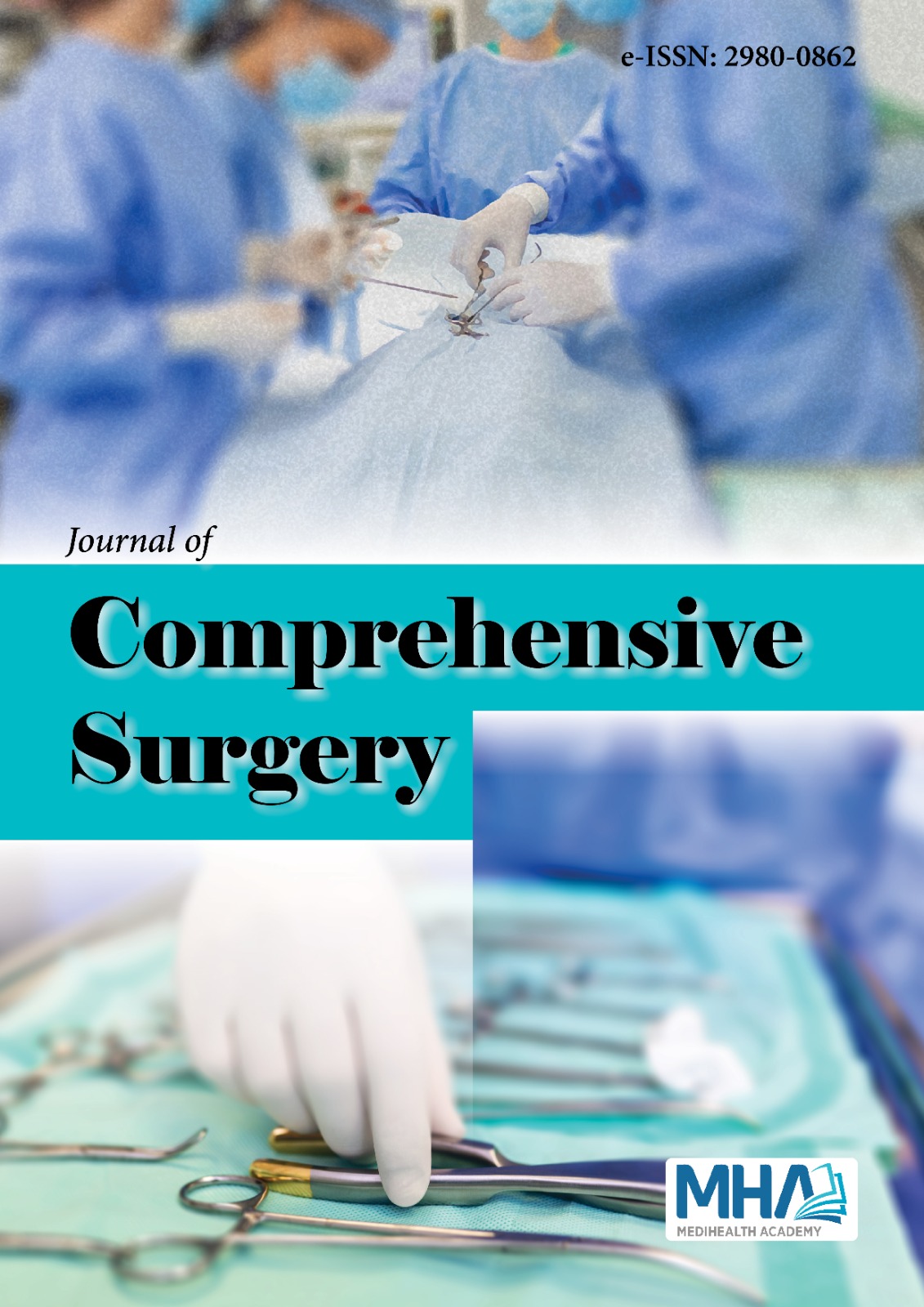1. Matsumoto K, Noma H, Fujita K, et al. Prognostic factors for severe-to-fatal post-endoscopic retrograde cholangiopancreatography pancreatitis: a multicenter prospective cohort study. J Clin Med. 2024; 13(4):1135. doi: 10.3390/jcm13041135
2. Obaitan I, Mohamed MFH, Beran A, et al. Comparative risks of post-ercp adverse events in patients with asymptomatic and symptomatic choledocholithiasis: a systematic review and meta-analysis. Dig Dis Sci. 2024;69(5):880-1888. doi: 10.1007/s10620-024-08374-0
3. Atamanalp SS, Yıldırgan MI, Kantarcı A. Endoscopic retrograde cholangiopancreatography (ERCP) outcomes of 3136 cases over 10 years. Turk J Med Sci. 2011;41(4):615-621.
4. Mutlu N, Bolat R, Yorulmaz F, et al. Endoskopik retrograd kolanjio pankreatografi (ERCP). Güncel Gastroenterol. 2005;10(1):120-123.
5. Keil R, Snajdauf J, Rygl M, et al. Diagnostic efficacy of ERCP in cholestatic infants and neonates-a retrospective study on a large series. Endoscopy. 2010;42(2):121-126.
6. Joseph D, Muraleedharanpillai R, Kolassery S, Sebastian S. Clinical profiles and outcomes of patients undergoing endoscopic retrograde cholangiopancreatography in a tertiary care center. Cureus. 2024;16(2): e55065. doi: 10.7759/cureus.55065.
7. Huang LY, Liu YX, Wu CR, et al. Application of endoscopic retrograde cholangiopancreatography in biliary-pancreatic diseases. Chinese Med J. 2009;122(24):2967-2972.
8. Meng ZW, Ruan Y, Fisher S, et al. Development and validation of a practical clinical risk prediction model for post-endoscopic retrograde cholangiopancreatography pancreatitis. DEN Open. 2024;4(1):e355. doi: 10.1002/deo2.355
9. Laokpessi A, Bouillet P, Sautereau D, et al. Value of magneticresonance cholangiography in the preoperative diagnosis ofcommon bile duct stones. Am J Gastroenterol. 2001;96(8):2354-2359.
10. Özcan Ö, Arikan S. Determining the risk factors of complications due to endoscopic retrograde cholangiopancreatography. Cureus. 2024;16(1):e51666.
11. Stefanova I, Kyle E, Wilson I, Tobbal M, Veeramootoo D, De’Ath HD. Laparoscopic cholecystectomy vs endoscopic retrograde cholangiopancreatography with sphincterotomy in elderly patients with acute gallstone pancreatitis. Am Surg. 2024:31348241248564. doi: 10.1177/ 00031348241248564
12. The Gastroenterology Leadership Council. Training the gastroenterologist of the future: the gastroenterology core curriculum. Gastroenterology. 1996;110(4):1266-1300.
13. Jowell PS, Branch S, Robuck F Mangum G, Fein S, Purich ED. Synthetic secretin administered at the start of the procedure significantly reduces the risk of post-ERCP pancreatitis: a randomized, double blind, placebo controlled trial. Gastroenterol. 2003;125:605.
14. Vitale GC, Zavalete CM, Vitale DS, Binford JC. Training surgens in endoscopic retrograde cholangiopankreatograhy. Surg Endosc. 2006; 20(1):149-152.
15. Penaloza-Ramirez A, Leal-Buitrago C, Rodriguez-Hernandez A. Adverse events of ERCP at San Jose Hospital of Bogota (Colombia). Rev Esp Enferm Dig. 2009;101(12):837-849.
16. Freeman ML, DiSario JA, Nelson DB, et al. Risk factors for post-ERCP pancreatitis: a prospective, multicenter study. Gastrointest Endosc. 2001;54(4):42534.
17. Lee SJ, Song KS, Chung JP, et al. Type of electric currents used for standard endoscopic sphincterotomy does not determine the type of complications. Korean J Gastroenterol. 2004;43(3):204-210.
18. Wurbs D. The development of biliary drainage and stenting. Endoscopy. 1998;30(9):A202-A206.
19. Heo J, Jung MK, Lee J, Lee DW, Cho CM, Cha JG. Comparative study between biliary covered self-expandable metal stent and conventional endoscopic bile drainage treatment in endoscopic retrograde cholangiopancreatography-related Stapfer type II retroperitoneal perforations. PLoS One. 2024;19(3):e0300029. doi: 10.1371/journal.pone.0300029
20. Freeman ML. Adverse outcomes of endoscopic retrograde cholangiopancreatography. Gastrointest Endosc. 2002;56(6):273-282.
21. Chistoforidis E, Goulimaris I, Kanellos I, Tsalis K, Demetriades C, Betsis D. Post ERKP pancreatitis and hyperamylasemia: patient related and opera tive risk factors. Endoscopy. 2002;34(4):286-292.
22. Bergman JJ, Rauws EA, Fockens P, et al. Randomised trial of endoscopi balloon dilation versus endoscopic sphincterotomy for removal of bile duct stones. Lancet. 1997;349(9059):1124-1129.
23. Britton J. Biliary and pancreatic endoscopy. In: Morris PJ, Wood WC, eds. Oxford Textbook of Surgery. 2nd ed. Lippincott Williams& Wilkins: 2000:551-558.
24. Zhou PH, Yao LQ, Xu MD. Application of needle knife in difficult biliary cannulation for endoscopic retrograde cholangiopancreatography. Hepatobiliary Pancreat Dis Int. 2006;5(4):590-594.
25. George S, Kulkarni AA, Stevens G, Forsmark CE, Draganov P. Role of osmolality of contrast media in the development of post-ERCP pancreatitis: a metanalysis. Dig Dis Sci. 2004;49(3):503
26. Tokumura H, Umezawa A, Cao H, et al. Laparoscopic management of common bile duct stones: transcystic approach and choledochotomy. J Hepatobiliary Pancreat Surg. 2002;9(2):206-212.
27. Gurusamy KS, Samraj K. Primary closure versus T-tube drainage afterlaparoscopic common bile duct stone exploration. Cochrane Database Syst Rev. 2007;24(1):CD005641.
28. Zhu QD, Tao CL, Zhou MT, Yu ZP, Shi HQ, Zhang QY. Primary closure versus T-tube drainageafter common bile duct exploration for choledocholithiasis. Langenbecks Arch Surg. 2011;396(1):53-62.
29. Yamazaki M, Yasuda H, Tsukamoto S, et al. Primary closure of thecommon bile duct in open laparotomy for common bile duct stones. J Hepatobiliary Pancreat Surg. 2006;13(5):398-402.
30. Tarnasky PR, Palesch YY, Cunningham JT, Mauldin PD, Cotton PB, Hawes RH. Pancreatic stenting prevents pancreatitis after biliary sphincterotomy in patients with sphincter of Oddi dysfunction. Gastroenterol. 1998;115(6):1518-1524.
31. Akat AZ, Doğanay M, Koloğlu M, Gözalan U, Dağlar G, Kama NA. Tek merkezde yapılan 1000 vakada laparoskopik kolesistektominin değerlendirilmesi. Türkiye Klin J Med Sci. 2002;22(2):133-141.
32. Ahmed I, Pradhan C, Beckingham IJ, Brooks AJ, Rowlands BJ, Lobo DN. Is a T-tube necessary aftercommon bile duct exploration? World J Surg. 2008;32(7):1485.
33. Sarıtaş Ü, Gören İ, Şenol A. Risk factors for complications of therapeutic ERCP: a single center prospective study. Akad Gastroent Derg. 2006;5(3):163-168.
34. Cahyadi O, Tehami N, de-Madaria E, Siau K. Post-ERCP pancreatitis: prevention, diagnosis and management.Medicina.2022;58(9):1261.
35. Leida Z, Ping B, Shuguang W, Yu H. A randomized comparison ofprimary closure and T-tube drainage of the common bile duct after laparoscopic choledochotomy. Surg Endosc. 2008;22(7):1595-1600.
36. Yılmaz S, Bal A, Özkeçeci T, Sıvacı R, Baki ED, Ahsen A. ERCP sonuçlarımız: genel cerrahi kliniğinde yapılan 703 olguluk ERCP deneyimi. 18. Ulusal Cerrahi Kongresi. 23-27 Mayıs 2012. İzmir.
37. Akın ML, Erenoğlu C, Filiz E, Batkın A. Laparoskopik kolesistektomi sonrasında oluşan intraoperatif minör komplikasyonların tedavisi. End-Lap Min İnv Cerr Derg. 1998;5:91-95.
38. Alabaz Ö, Sönmez H, Erkoçak EU, Camcı C, Dalyan O. Laparoskopik kolesistektomi:192 olgunun sunumu. End-Lap Min İnv Cerr Derg. 1996;3:94-99.
39. Ağalar F, Özdemir A, Sayek, et al. Laparoskopik kolesistektomi: 500 olgunun incelenmesi-Hacettepe deneyimi. End-Lap Minimal İnv Cerr Derg. 1996;3:100-106.

